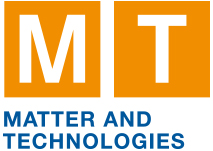Speaker
Description
Soft X-rays have a variety of applications at synchrotrons and FELs. In particular, the photon energy of these sources can be tuned to element-specific excitations, and in the soft X-ray range this allows (for example) high sensitivity to the carbon atoms that form the backbone of biological structures, or to excitations in transition metals that are crucial to magnetism. However, soft X-rays are challenging to detect due to their very short absorption length and low signal per photon.
Firstly, we are developing the Percival CMOS imager for soft X-rays. This is a 2-megapixel detector aimed at achieving a high dynamic range, sensitivity to single photons down to 250 eV, and high frame rate of 300 Hz. This has been developed as a collaboration of multiple light sources (DESY, Elettra, Diamond, Pohang Accelerator Lab and Soleil) together with Rutherford Appleton Laboratory. Its soft X-ray performance relies on the combination of a multigain design for high dynamic range, and backside illumination with a thin entrance window for minimal insensitive thickness. Recently, a second generation of Percival has been developed. This has three key elements: a second-generation sensor that corrects problems with the first version, particularly nonuniformities and cross-talk; new DAQ hardware and firmware allowing operation close to the maximum frame rate and new features such as ROI; and an improved form factor and cooling to improve practical usability. The second-generation sensor and DAQ are now being tested in experiments at beamlines.
In addition, we have begun to collaborate with other institutes on developments of LGADs. By achieving a gain improvement of 10-20 compared to standard silicon photodiodes, LGADs could allow existing hybrid pixel detectors such as AGIPD to operate in the soft X-ray range. Firstly, inverse LGADs produced by Sintef are being bonded for testing with AGIPD chips. Secondly, we are collaborating with the Max Planck Semiconductor Laboratory, who are developing a novel LGAD design with a deep gain layer called MARTHA. This should allow 100% fill factor while minimizing the backside layer thickness and achieving consistent gain at different X-ray energies.

